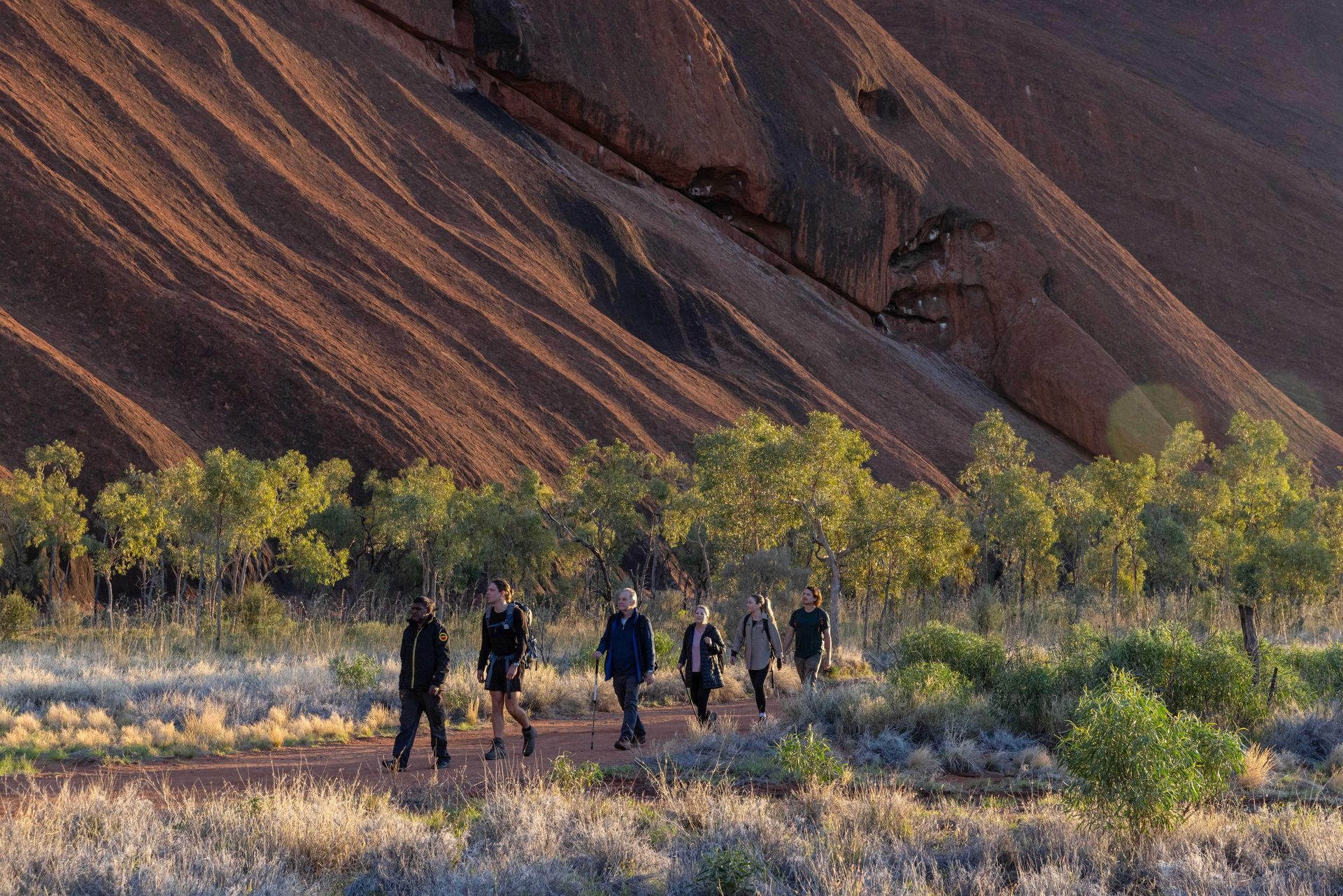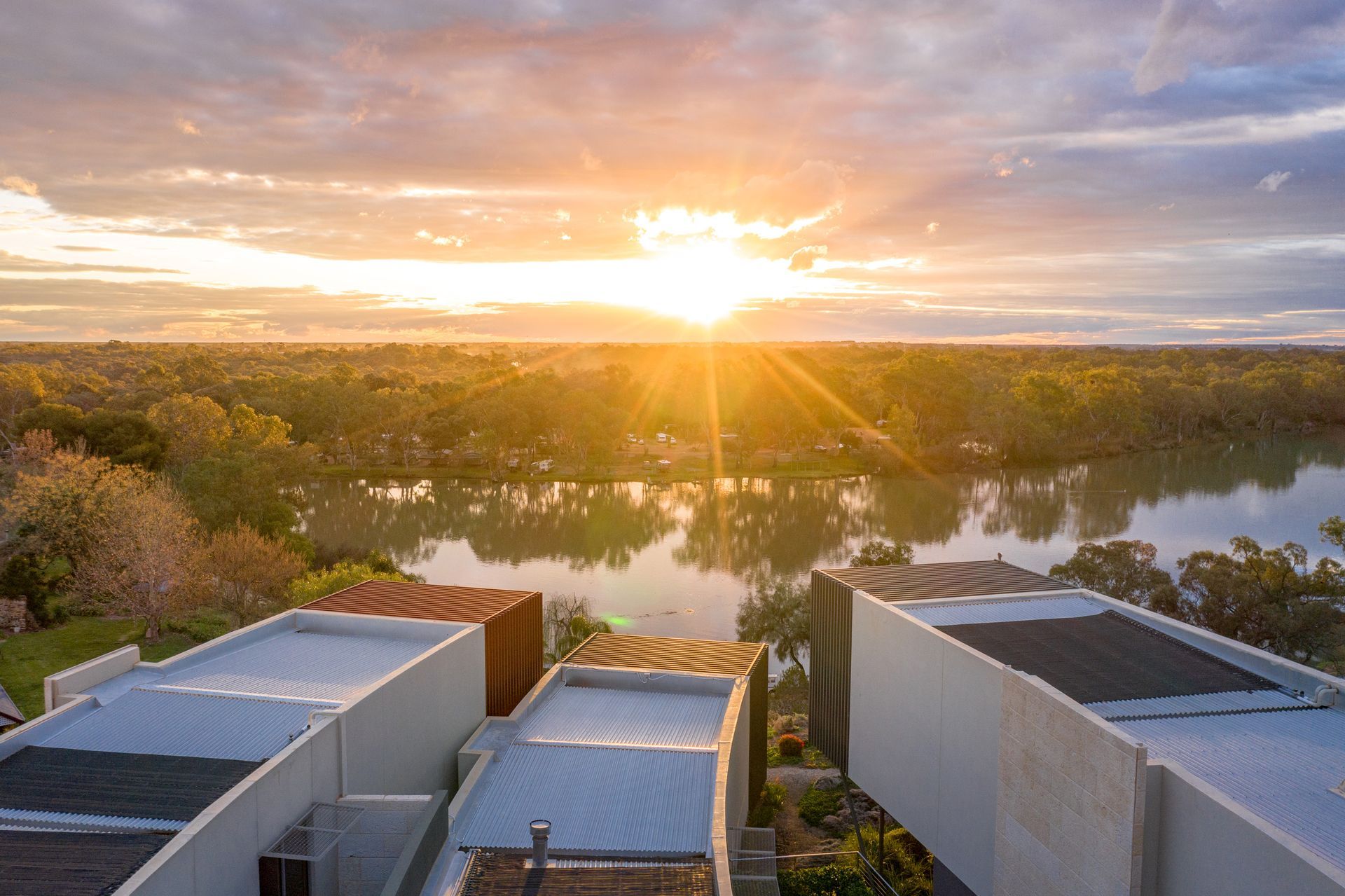Northern Territory FAM Trip: Raw, Real, and Rich in Story
Jenny Revesz • August 10, 2025
Northern Territory FAM Trip: Raw, Real, and Rich in Story
As an Australian, I’m almost embarrassed to admit I had never properly explored the Northern Territory until this April. But after spending a week immersed in its culture, landscapes, and stories—from Darwin to Kakadu to Katherine—I came home completely captivated. It is amazing and I will definitely go back. Going in late April is the end of the rainy season and is hot. However, the rivers and waterfalls and gorges are full, and the area is lush and green. It was absolutely beautiful.
Darwin: Arrival, Exploration & Waterfronts
I arrived at Darwin during the afternoon, which gave me the perfect opportunity to wander around—a ritual I always love to do when stepping into a new place. There’s something about those first few hours on foot that sets the tone for the entire trip.
Our group then spent time exploring with Rob from Ethical Adventures. Between Fogg Dam and the Territory Wildlife Park, we eased into the NT’s rhythm—lush landscapes, birdlife, and an environmental awareness that quietly seeps in. That evening, we boarded a sunset cruise with Darwin Harbour Cruises.
One of the real highlights was reconnecting with a lovely couple I’d met on a past trip from Darwin. They kindly showed me around parts of the city, adding a personal, local touch to my experience that truly made it feel like coming home.
Litchfield to Kakadu: Closed Falls & Ancient Art
The next day, we set off with Offroad Dreaming toward Litchfield National Park. In true Top End fashion, Wangi Falls was closed due to a crocodile sighting—wild nature reminding us of who’s really in charge out here. No complaints though—our journey into Kakadu National Park more than made up for it.
After settling into the Mercure Crocodile Hotel in Jabiru, we unfortunately could not visit Ubirr Rock due to the road still be covered in water. Being adaptable and flexible is extremely important when travelling. A wonderful dinner was arranged at the Mercure and trees full of noisy cockatoos and wildlife running around in the dark outside made for lots of excitement.
Soaring Above & Floating Through
One of the most memorable moments of the trip was taking a scenic light aircraft flight over Jim Jim Falls. Seeing the escarpments from the air gave us a whole new appreciation for Kakadu’s vastness—it’s a landscape you can’t quite grasp from the ground alone.
Back on land, we joined the new Yellow Water Wetlands Culture Cruise—an absolute highlight for me. Gliding through Kakadu’s waterways, we learned about bush tucker, saw crocs in the water, and were introduced to Country through Indigenous perspectives. The stillness, the birdlife, the reflections on the water—it was one of those deeply grounding experiences I’ll never forget.
We then checked into Cooinda Lodge, and that night, something magical happened—wild brumbies came through the property in the dark. A couple of them walked right up to me. It was one of those quietly powerful moments you don’t plan for but never forget. I was woken up and just raced outside in bare feet not even thinking as it was around 2am.
Dinner Under the Moon, Falls & Full-Hearted Feasting
We were treated to the Kakadu Full Moon Dinner, a beautifully curated four-course bush tucker experience by Kakadu Kitchen and Mimi’s Restaurant. Under the stars, with didgeridoo and a stargazing presentation, it was a celebration of culture, connection, and cuisine.
The next day took us further south in Kakadu, exploring more waterfalls and remote corners of the park. While some paths required a bit of walking, it always felt rewarding. This region doesn’t shout; it whispers—and you find yourself listening more closely.
Katherine: Helicopters, Gorges & Real Country Life
From Kakadu, we made our way to Nitmiluk/Katherine Gorge and settled into the serene Cicada Lodge. This is a beautiful property. We were treated to a boat cruise through two of the gorges which were stunning—but the true “wow” moment came when we took a helicopter flight over all 17 gorges. The landscape unfolded beneath us like a living canvas—carved, rugged, and majestic. It gave me chills as well as sweaty palms since I really do have a fear of heights.
The following morning, we joined the “Footsteps of Our Ancestors” cultural experience, which brought powerful Indigenous storytelling and interpretation to life on the land. It was deeply moving, quietly educational, and one of the most authentic experiences of the trip.
Later that day, we visited the Katherine Hot Springs for lunch. Once again, we could not swim due to Crocodile sightings. However, I did manage to walk down and take a couple of photos so I could understand how beautiful it was. The afternoon was capped off with the Katherine Outback Experience—a lively and heartfelt show featuring working dogs, horses, and bush tales that made us laugh and lean in. It was raw, real, and full of character—just like the Territory. Unfortunately, we only had time to see a small part of this, and I so wish we were staying another day in order to see the entire event.
A Final Taste of Darwin
Our final day brought us back to Darwin for one last taste of NT life—lunch at Meraki, a street art wander, and dinner at Snapper Rocks on the Waterfront. The vibe was relaxed and easy, a perfect close to a full and deeply enriching journey.
Final Thoughts
The Northern Territory surprised me—not with flashy moments, but with raw, layered ones. It’s a place where the stories are ancient, the people are warm, and the landscapes are entirely their own.
This trip reminded me of the value in slowing down, tuning in, and seeing Australia through a different lens—through the eyes of those who have been here for tens of thousands of years, and those who call it home today.
If you're looking to experience Australia in a way that’s grounded, immersive, and unlike anywhere else, the Northern Territory is calling.
Jenny x

Each month, I highlight something truly special — a place, experience, or journey that captures the spirit of what I love most about travel: authenticity, connection, and discovery. This November, I’m shining a spotlight on one of Australia’s most inspiring adventures — the Uluṟu-Kata Tjuṯa Signature Walk , part of the renowned Great Walks of Australia collection. This incredible five-day experience invites travellers to walk in the heart of the Red Centre , between the striking domes of Kata Tjuṯa and the sacred base of Uluru, guided by experts who share the stories, culture, and ecology of this remarkable land. You’ll journey through vast desert landscapes, ancient rock formations, and peaceful mulga woodlands, experiencing both the raw beauty and deep spirituality of the region. Days are filled with guided walks and cultural interpretation; nights bring campfire dinners, comfortable eco-accommodation, and endless star-filled skies — all within the boundaries of Uluṟu-Kata Tjuṯa National Park. Guests carry only a light day pack, while main luggage is transferred ahead each day — leaving you free to walk, explore, and simply take it all in. A Stay Like No Other This walk offers something that’s never been available before — the chance to stay exclusively inside the National Park after sunset. Once the day visitors leave, the desert quiets, and you have this extraordinary landscape entirely to yourself. The first two nights are spent in beautifully designed eco-camps that seem to melt into the desert surroundings. Think spacious canvas tents with full-height ceilings, plush bedding, hot showers, and inviting communal spaces for shared meals and stargazing. One camp overlooks the glowing domes of Kata Tjuta, while another sits perfectly between Kata Tjuṯa and Uluru, complete with panoramic viewing decks and even soothing foot spas to relax tired legs after a day on the trail. For the final two nights, the experience elevates again at the Private Lodge — an elegant desert retreat featuring a plunge pool, lounge areas, and a small wellness centre offering facials, massage, and bathing rituals. From here, Uluru’s colours shift throughout the day — from deep ochre to soft pink and gold — right outside your window. Every detail has been created with sustainability and respect for Country in mind. Solar power, rainwater harvesting, and natural materials ensure comfort with a light footprint — a thoughtful blend of wilderness and understated luxury. Why It’s Special What makes this walk so unique is how seamlessly it blends comfort, connection, and authenticity. Every detail — from gourmet meals to the stories shared by the guides — is crafted with care and respect. Even more meaningful is the walk’s partnership with the Anangu Traditional Owners, ensuring that each step honours the land and its ancient stories. For those seeking something beyond sightseeing — something immersive, active, and deeply moving — this walk delivers in every way. It’s perfect as a stand-alone adventure or as part of a larger Northern Territory itinerary that includes time in Darwin, Kakadu, or along the Top End’s wild coastline. The Details Duration: 5 days / 4 nights Distance: Approx 54 km Fitness Level: Moderate Operated by: Tasmanian Walking Company (part of the Great Walks of Australia) Why I Love It It’s the perfect balance of physical challenge, cultural depth, and natural wonder — a once-in-a-lifetime way to experience the sacred landscapes of Uluru and Kata Tjuta. Ready to walk the heart of Australia? Let’s start planning your Great Walk adventure together.

A Personal Connection Sometimes the best travel finds come through personal connections. At the Australian Tourism Exchange (ATE) in Brisbane earlier this year, I first met Rick and Cathy Edmonds — the passionate owners behind The Frames, a boutique luxury property in South Australia. Recently, I had the chance to reconnect with them over breakfast whilst they were in Vancouver, and I left feeling inspired not just by their story, but by what they’ve created on the banks of the Murray River. Luxury Meets Authenticity The Frames is more than just accommodation. It’s a collection of beautifully designed private retreats created for travelers who want both luxury and authenticity . Each villa includes thoughtful touches like private pools, sweeping views, and all the comforts you’d expect from a five-star stay. What makes it truly special is the way Rick and Cathy have woven in the essence of the Murray region. Guests can enjoy guided river cruises, local food and wine experiences, and opportunities to connect with the culture and landscape in meaningful ways. Why I Love It For my clients, this is exactly the kind of hidden gem I love to recommend: a place where you can slow down, savor the moment, and connect with Australia beyond the usual routes . It’s indulgent and restorative, but also deeply rooted in its surroundings — the perfect reflection of what I call a Travel Like Jenny property. Ready to Experience The Frames? I’d love to share my insider perspective and help you weave this unique retreat into your own Australian journey. Reach out to learn more about The Frames here .
